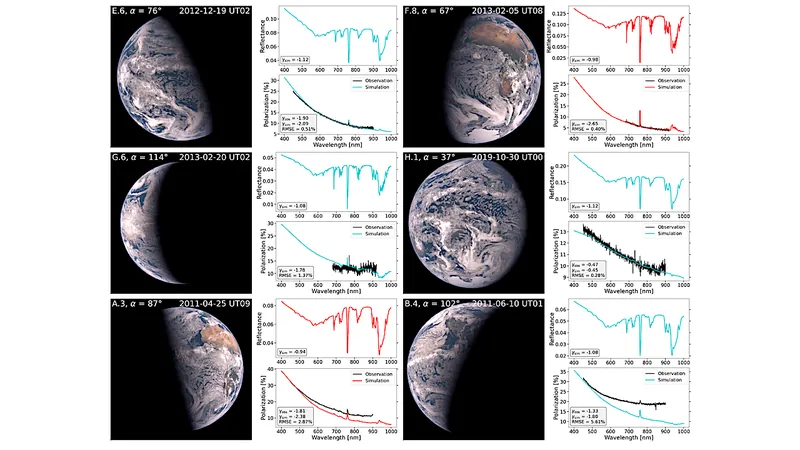
Asteroid 2023 CX1: Amateur Astronomers Unveil Fiery Descent in France
2025-09-21
Author: Olivia
A Cosmic Collaboration: Amateur Astronomers and Scientists Join Forces
In an exciting cosmic event, amateur astronomers played a crucial role as scientists tracked Asteroid 2023 CX1 from the depths of space to its fiery disintegration over northwestern France. This remarkable collaboration unveiled new insights into how asteroids meet their end in our atmosphere.
Spectacular Sky Show
On February 13, 2023, at approximately 4:00 PM local time, this small asteroid, measuring under a meter wide and weighing 650 kilograms, briefly illuminated the sky as it fragmented, scattering fiery debris across the ground.
Spotting the Space Rock
Just seven hours before its spectacular descent, a Hungarian astronomer detected the asteroid approximately 200,000 kilometers from Earth. Scientists from NASA and the European Space Agency quickly mobilized, meticulously calculating its trajectory and descent with groundbreaking precision.
The Power of Community
Astronomers around the globe joined the effort to analyze this celestial event. Notably, members of France's FRIPON/Vigie-Ciel network—dedicated to detecting meteorite impacts—actively engaged in this thrilling astronomical research. "We received a flood of photos and videos capturing the asteroid's brief journey," revealed Brigitte Zanda, a meteorite specialist with the French National Museum of Natural History.
Unlocking the Asteroid's Secrets
The engagement with the public, including thorough reviews of social media footage, allowed scientists to document the event with unmatched accuracy. A particularly insightful video showed how 2023 CX1 fragmented into multiple pieces, providing a deeper understanding of its disintegration.
Recovering the Fragments
Within two days, locals helped locate the first meteorite weighing 93 grams in Saint-Pierre-le-Viger, leading to around a dozen more finds that were added to the museum's collection. After two and a half years of research, findings about the asteroid were published in a study in Nature Astronomy.
Understanding Asteroid Fragmentation
The study concluded that 2023 CX1 likely originated from a larger asteroid in the Massalia family, situated between Mars and Jupiter. The asteroid experienced a dramatic two-stage disintegration approximately 28 kilometers above Earth, losing an astonishing 98% of its mass and releasing immense energy.
Potential Dangers of Asteroid Fragmentation
Zanda noted that this event represents perhaps only the second observation of such brutal fragmentation. The manner in which an asteroid breaks apart heavily depends on various factors, including entry speed and rock composition. Luckily, none of the meteorites caused any destruction on land, although simulations suggest this type of fragmentation could potentially be more hazardous than a slower breakdown, like the famous Chelyabinsk event in 2013.
A Bright Spot in Astronomical Research
Despite the potential dangers of asteroid fragmentation, the successful tracking and recovery of 2023 CX1 have provided astronomers with invaluable data. This thrilling event encapsulates the power of collaboration between amateur enthusiasts and scientists, significantly enriching our understanding of celestial phenomena.









 Brasil (PT)
Brasil (PT)
 Canada (EN)
Canada (EN)
 Chile (ES)
Chile (ES)
 Česko (CS)
Česko (CS)
 대한민국 (KO)
대한민국 (KO)
 España (ES)
España (ES)
 France (FR)
France (FR)
 Hong Kong (EN)
Hong Kong (EN)
 Italia (IT)
Italia (IT)
 日本 (JA)
日本 (JA)
 Magyarország (HU)
Magyarország (HU)
 Norge (NO)
Norge (NO)
 Polska (PL)
Polska (PL)
 Schweiz (DE)
Schweiz (DE)
 Singapore (EN)
Singapore (EN)
 Sverige (SV)
Sverige (SV)
 Suomi (FI)
Suomi (FI)
 Türkiye (TR)
Türkiye (TR)
 الإمارات العربية المتحدة (AR)
الإمارات العربية المتحدة (AR)